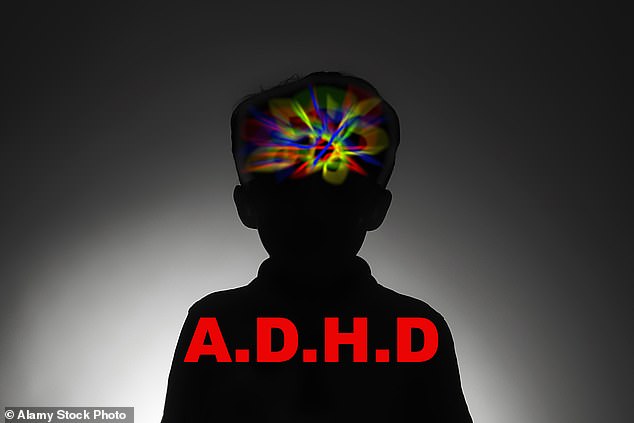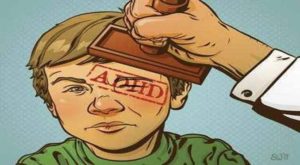Experts discuss comprehensive treatment approaches including both medication and behavioral interventions.
 Rates of ADHD medication use, particularly stimulants, have been rising in the United States, especially since the COVID-19 pandemic, with prescriptions for both stimulant and non-stimulant ADHD medications surging.
Rates of ADHD medication use, particularly stimulants, have been rising in the United States, especially since the COVID-19 pandemic, with prescriptions for both stimulant and non-stimulant ADHD medications surging.
The rising frequency of ADHD medication prescription has prompted a renewed focus on their safety profiles. Recent research shows that all common treatments result in slight increases in blood pressure and heart rate. However, experts caution that these effects should be considered alongside the significant benefits these medications provide.
~ Increased Blood Pressure and Heart Rate ~
A comprehensive analysis published in The Lancet Psychiatry found that ADHD medications could increase or decrease blood pressure in patients.
Researchers analyzed data from more than 22,000 patients across 102 clinical trials, finding that stimulants and non-stimulants alike produced small cardiovascular changes.
The medications examined included stimulants like amphetamines, as well as nonstimulants such as atomoxetine (Axetra, Axepta, Attera, Tomoxetin, and Attentin), methylphenidate (Ritalin, Concerta, Delmosart, Equasym, Medikinet), and viloxazine (Qelbree), which are selective norepinephrine reuptake inhibitors (NRIs).
They work by hindering the reuptake of norepinephrine in the brain, allowing more of it to remain available to enhance focus. However, the elevated norepinephrine levels may also increase sympathetic nervous system activity, which can raise blood pressure.
Among children and teens, systolic blood pressure rose by an average of 1.07 mmHg with atomoxetine, and 1.81 mmHg with methylphenidate. In adults, increases ranged from 1.66 mmHg with methylphenidate to 2.30 mmHg with amphetamines.
Viloxazine and atomoxetine were also associated with higher pulse rates compared to placebo, with viloxazine linked to an increase of around 2.8 beats per minute and atomoxetine to an increase of 5.6 beats per minute.
While these increases aren’t concerning on their own, especially in the context of a normal blood pressure reading, people who already have high blood pressure may experience further risks due to taking ADHD medications.
Guanfacine (Tenex, Intuniv), had the opposite effect. Since it can also be prescribed to reduce blood pressure, it lowered blood pressure and pulse rate in both groups, causing a drop of 2.83 mmHg in systolic blood pressure for children and a 10.10 mmHg decrease in adults.
Rather than increasing norepinephrine levels in the brain like other stimulants, guanfacine mimics norepinephrine by binding to the same receptors norepinephrine would normally activate. This binding activates neurons to improve concentration. At the same time, the receptors guanfacine binds to cause a relaxing of blood vessels, resulting in downstream blood pressure-reducing effects.
“Practitioners should monitor blood pressure and pulse in patients with ADHD treated with any pharmacological intervention, and not stimulants only,” the study authors advised.
ADHD medications can have side effects. “The most common are decreased appetite and trouble falling asleep,” Cathryn A. Galanter, professor of psychiatry and division director of child and adolescent psychiatry at Stony Brook Medicine, told The Epoch Times. “Thus it is important to monitor eating, height and weight if you take medication for ADHD.”
However, medication isn’t the only way to treat ADHD, experts say.
To best treat ADHD in a child or adolescent, the first step is a comprehensive assessment that involves interviewing the patient and parents, and gather information from teachers, Galanter said.
While medications have strong evidence for effectiveness, Galanter noted that several complementary approaches can also be beneficial.
There may be situations when it is preferable to start with behavioral therapy, “for example, with preschool children, or when a family would prefer to try behavioral therapy before medication,” Galanter told The Epoch Times.
Less common adverse effects include changes with mood, reduced growth, and “in very rare cases, heart symptoms such as feeling like your heart is pounding or passing out,” she said.
~ Balancing Medication and Behavioral Approaches ~
The most effective treatment for ADHD requires combining medication with behavioral strategies and support systems alongside lifestyle changes, Sanam Hafeez, neuropsychologist and director of Comprehend the Mind in New York, told The Epoch Times.
 “A multifaceted approach is required to treat ADHD because no single solution fits everyone’s needs,” she said, adding that stimulant medications such as Adderall and Ritalin often help many people improve their focus, impulse control, and executive functioning.
“A multifaceted approach is required to treat ADHD because no single solution fits everyone’s needs,” she said, adding that stimulant medications such as Adderall and Ritalin often help many people improve their focus, impulse control, and executive functioning.
For those who prefer non-medication approaches or experience intolerable side effects, Hafeez noted several evidence-based alternatives. People who shun medications or experience intolerable side effects can find effective symptom management through non-drug approaches like cognitive behavioral therapy (CBT), coaching, structured routines, mindfulness practices, and exercise.
“CBT stands as one of the most scientifically supported non-pharmacological treatments which enables people to learn coping mechanisms while enhancing time management skills and minimizing impulsive behaviors,” Hafeez said.
Kirsten Tretbar, psychotherapist at Tretbar Therapy in Kansas City, uses CBT along with narrative therapy, which involves encouraging patients to find alternative narratives that emphasize strengths and positives to their experiences. “With CBT, we focus on changing those tricky thought patterns,” Tretbar said. “And with Narrative Therapy, we help people reframe their stories.”
She added that ADHD can also be interpreted as having an extraordinary ability. “I like to tell folks that ADHD isn’t just a struggle; it’s kind of like having a superpower,” Tretbar said. “Many of my clients with ADHD are also highly gifted or intelligent. They have the kind of brain that can hyper-focus on something, kind of like how a race car driver can tune everything out except for the track.”
For children under 6, behavior therapy is often recommended before medication, and for older children, a combination of medication and behavior therapy is often used.
~ Waking Up the ADHD Brain ~
Tretbar noted that people with ADHD often experience difficulties with morning routines and self-regulation, which can be addressed through structured behavioral strategies and understanding.
“One thing I always share with families,” Tretbar said, “is how the ADHD brain often wakes up feeling like it’s still in a deep sleep.”
She explained that it can take longer for an ADHD brain to “wake up” than a typical brain, so mornings can be a rough time, leading to some interesting coping mechanisms, including picking a fight to get themselves going.
“It’s not ideal,” Tretbar said. “But it’s their brain trying to get itself going.”
She described her first-hand experience learning this “the hard way” living with her husband, who has ADHD.

Just take a little pill…
“Now, we just laugh about it,” Tretbar said. “I’ll say, ‘You waking up your brain honey?’ and he’ll shout, ‘Yep, just waking up my brain!’ It works. We laugh, and we go about our day. I don’t take it personally anymore, and he’s honestly, less grumpy.”
Some people may choose to adopt risky behavior to feel regulated, “like jumping a ramp on a bike or doing something daring like rock climbing into a dark cave,” she added. “For ADHD folks, it can actually help wake up their brains. It’s like an instant brain energizer.”
She pointed out that acknowledging the condition is an important step to managing it.
“I always say, ‘Name it to tame it,’” Tretbar said, explaining that once you can name the problem, it loses some of its power and becomes much easier to discuss.
“And when the whole family gets on board with understanding ADHD, it really is a game changer,” she said. “People start to adapt, and that’s when the real progress happens.”
Written by George Citroner for Epoch Health ~ April 16, 2025
